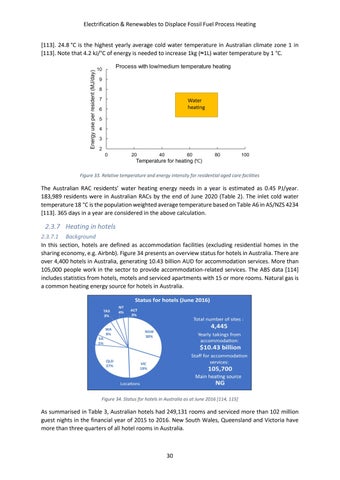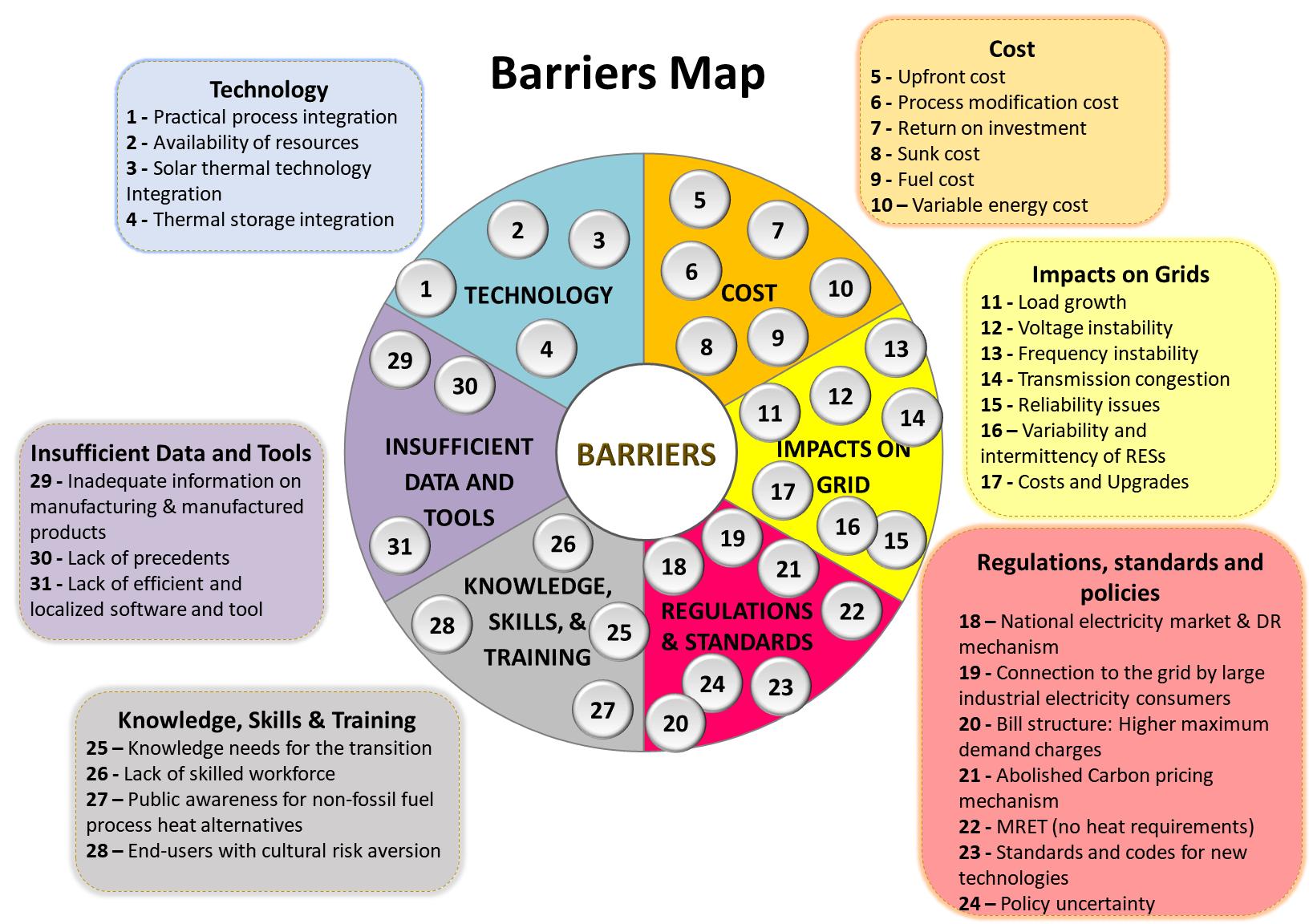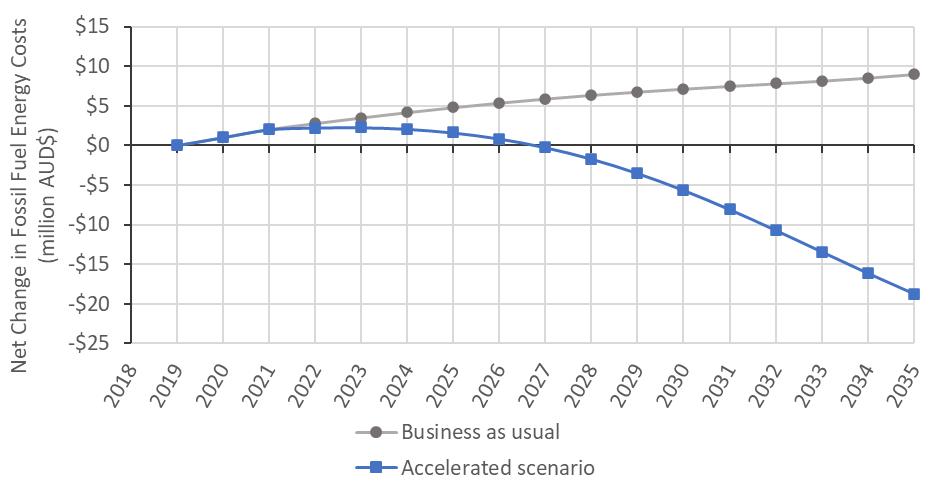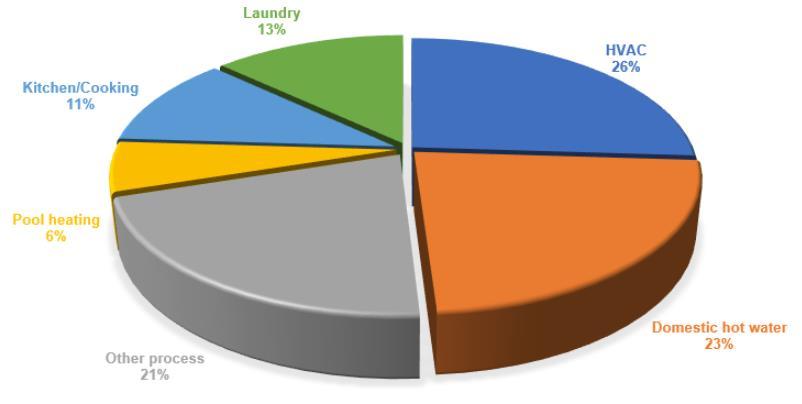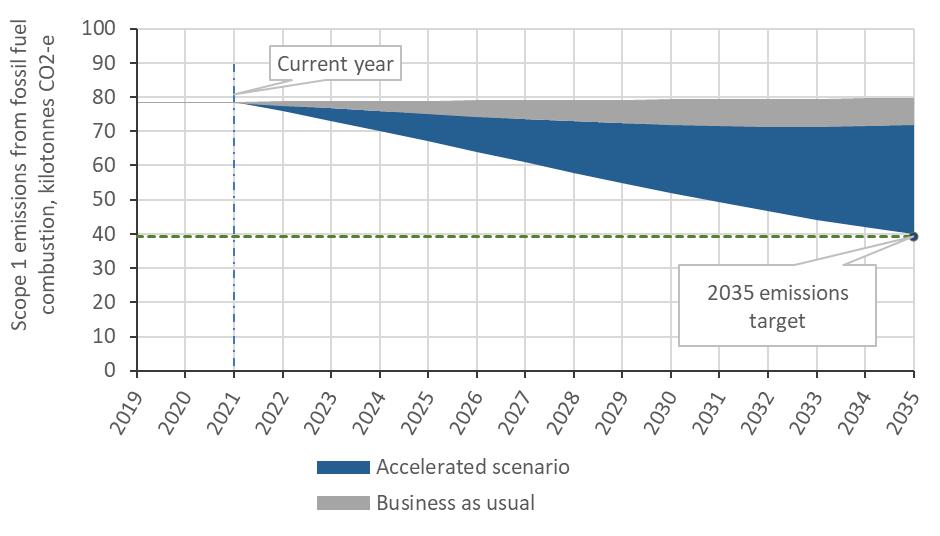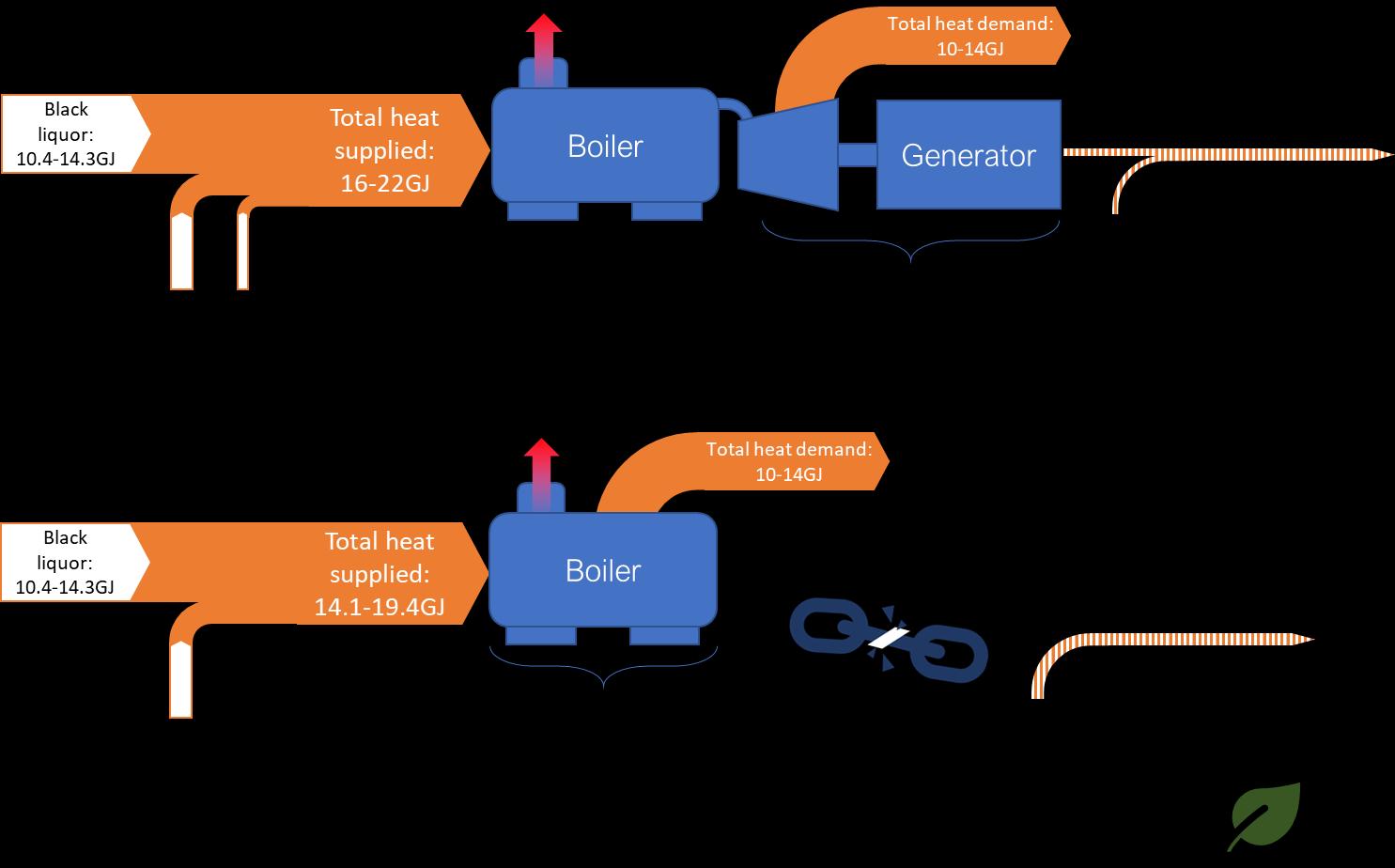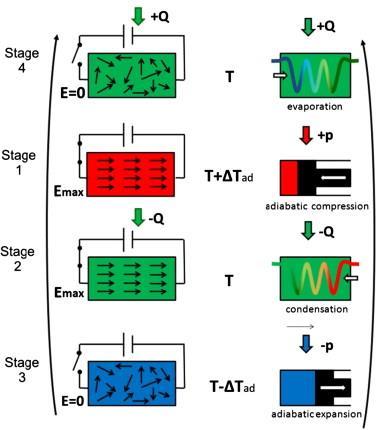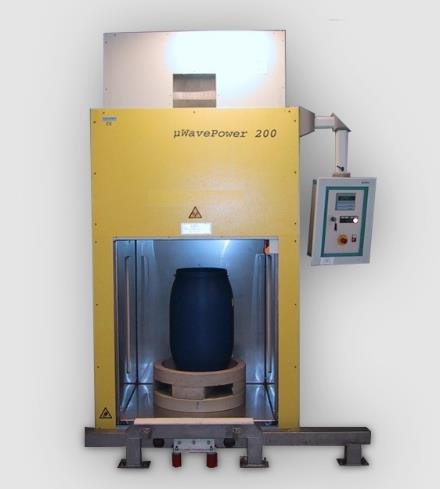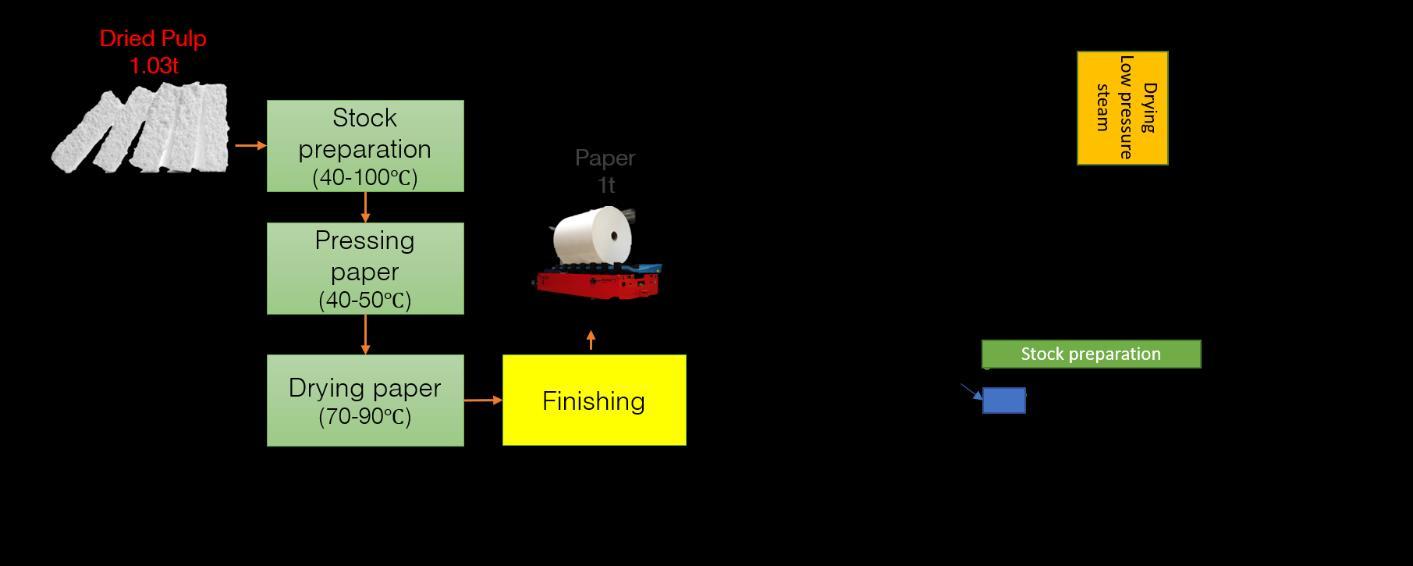Electrification & Renewables to Displace Fossil Fuel Process Heating [113]. 24.8 °C is the highest yearly average cold water temperature in Australian climate zone 1 in [113]. Note that 4.2 kJ/°C of energy is needed to increase 1kg (≈1L) water temperature by 1 °C.
Figure 33. Relative temperature and energy intensity for residential aged care facilities
The Australian RAC residents’ water heating energy needs in a year is estimated as 0.45 PJ/year. 183,989 residents were in Australian RACs by the end of June 2020 (Table 2). The inlet cold water temperature 18 °C is the population weighted average temperature based on Table A6 in AS/NZS 4234 [113]. 365 days in a year are considered in the above calculation.
2.3.7 Heating in hotels 2.3.7.1 Background In this section, hotels are defined as accommodation facilities (excluding residential homes in the sharing economy, e.g. Airbnb). Figure 34 presents an overview status for hotels in Australia. There are over 4,400 hotels in Australia, generating 10.43 billion AUD for accommodation services. More than 105,000 people work in the sector to provide accommodation-related services. The ABS data [114] includes statistics from hotels, motels and serviced apartments with 15 or more rooms. Natural gas is a common heating energy source for hotels in Australia.
Figure 34. Status for hotels in Australia as at June 2016 [114, 115]
As summarised in Table 3, Australian hotels had 249,131 rooms and serviced more than 102 million guest nights in the financial year of 2015 to 2016. New South Wales, Queensland and Victoria have more than three quarters of all hotel rooms in Australia.
30
